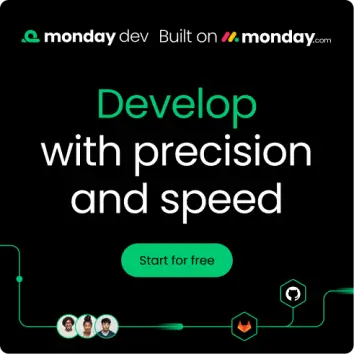In today’s competitive market, building a good product is only the starting point. With so many alternatives available, the real challenge is making yours stand out in ways that customers truly value. That is the role of product differentiation: shifting competition away from price and toward unique qualities that resonate with your audience.
This article explores the four main types of differentiation, a seven-step process for creating your own strategy, and the key factors that separate successful approaches from those that fall short. It also highlights how to connect market gaps with customer needs so you can gain a distinct product positioning.
To succeed, differentiation must move beyond theory and become part of day-to-day operations. That means every team, from engineering to marketing, works toward the same vision and delivers a consistent experience. With the right systems in place to support that collaboration, companies can turn distinct ideas into lasting market advantages.
Try monday devKey takeaways
- Differentiate to compete: Product differentiation builds advantage by making your offering stand out in ways customers value, enabling premium pricing and stronger loyalty.
- Follow a clear process: Use a seven-step approach — analyze competitors, identify customer priorities, map opportunities, define your unique value proposition, align teams, implement tactics, and measure results.
- Leverage monday dev: Custom workflows, real-time collaboration, and AI-powered insights help teams execute differentiation strategies more effectively.
- Combine all four types: Horizontal (different preferences), vertical (quality levels), price-based (strategic positioning), and feature-based (unique capabilities) differentiation work best when applied together.
- Measure and refine: Track impact through market share growth, customer satisfaction scores, and competitive win rates to keep your product strategy evolving.
What is product differentiation?
Product differentiation is the practice of making your product or service stand out from competitors by offering features, benefits, or experiences that customers truly value. This is more important than ever, especially since a VentureBeat article highlights that 83% of consumers pay as much attention to how a brand treats them as they do to the product itself.
Put simply, when customers are faced with multiple options, differentiation is the factor that makes them choose yours. It’s not just about being different — it’s about being different in ways that matter most to your audience.
Defining product differentiation in modern markets
In modern markets, product differentiation means finding clear and meaningful ways to stand out in environments where customer expectations shift quickly. Digital transformation has raised the bar, and customers now compare not only features but also experience, service, and brand trust when making decisions. Differentiation today often blends these elements, with success depending on choosing the mix that aligns best with what your customers value most.
Product differentiation vs market positioning
Product differentiation and market positioning are closely linked but serve different roles. Differentiation is built into the product itself through features, benefits, and qualities that make it unique. Market positioning is how that uniqueness is communicated to customers and the space it occupies in their perception.
For example, a product may be differentiated by offering customizable workflows. Its positioning, however, could be presented as “the most flexible solution for growing teams.” Differentiation creates the value, while positioning ensures the market understands and remembers it.

How product differentiation creates competitive advantage
Successful product differentiation changes the nature of competition. Instead of battling rivals on price, you compete on unique value that customers cannot find elsewhere. This shift unlocks advantages that reinforce one another over time, from stronger pricing power to higher customer retention and a more defensible market position.
When differentiation is clear and consistent, it becomes harder for competitors to win customers away, even with lower prices. At the same time, it creates opportunities to build lasting loyalty and increase profitability by delivering benefits that are difficult to copy.
Building sustainable market leadership
Lasting market leadership comes from more than short-term wins; it requires differentiation that competitors cannot quickly erase. When customers view your product as uniquely valuable, they remain loyal even if alternatives are cheaper or more aggressively marketed.
Sustainable differentiation often relies on elements that take significant time and resources to duplicate, such as proprietary technology, specialized expertise, or deeply integrated systems. Tools like monday dev support this by giving teams a flexible Work OS that scales with evolving needs, ensuring differentiation is reinforced through consistent execution rather than eroded by operational gaps.
Impact on pricing power and profitability
Differentiated products are able to command higher prices because customers associate them with greater value. That pricing power translates directly into stronger margins and healthier profitability.
Even in challenging market conditions, these premiums tend to hold. While competitors may slash prices to stay afloat, a product with clear and unique value can sustain its position and continue delivering returns without sacrificing profitability.
Customer loyalty through unique value
Product differentiation strengthens relationships that extend beyond individual features. When a solution addresses problems in ways competitors cannot replicate, customers develop lasting preferences that are difficult to break.
This loyalty can be measured in clear, tangible ways:
- Higher customer lifetime value as satisfied users stay longer and expand their usage.
- Lower acquisition costs since loyal customers are less expensive to retain than to replace.
- Increased referrals and advocacy as happy customers recommend your product to others.
4 types of product differentiation every business should know
Not all differentiation looks the same. Companies can stand out in different ways depending on their market, customers, and goals. The four core types of product differentiation — horizontal, vertical, price-based, and feature-based — give businesses a set of proven approaches for creating value that feels unique.
Each type works best in certain situations, and many successful companies combine them over time. Most start by mastering one form of differentiation, building a strong foundation before layering on others to strengthen their competitive edge.
Horizontal differentiation
Horizontal differentiation creates products that are different but not necessarily higher quality. Customers choose based on personal preferences rather than objective superiority.
This works well when customer tastes vary widely. Success comes from understanding distinct segments and creating offerings that match their specific preferences.
Vertical differentiation
Vertical differentiation creates clear quality levels. Customers generally prefer the higher-quality option if price wasn’t a factor.
Companies using this approach often offer multiple tiers. Each tier delivers appropriate value for its price while maintaining clear distinctions between levels.
Price-based differentiation
Price-based differentiation positions products strategically within market price ranges. This isn’t just about being cheap or expensive — it’s about optimizing the entire value equation.
Premium pricing needs superior features or service to support it. Value pricing requires operational efficiency to deliver profitably at lower price points.
Feature-based differentiation
Feature-based differentiation adds unique capabilities that competitors don’t offer. The challenge is ensuring these features solve real problems rather than adding complexity.
The best feature differentiation comes from deep customer research, which drives product innovation: discover problems customers didn’t know they had and create solutions that deliver significant value.
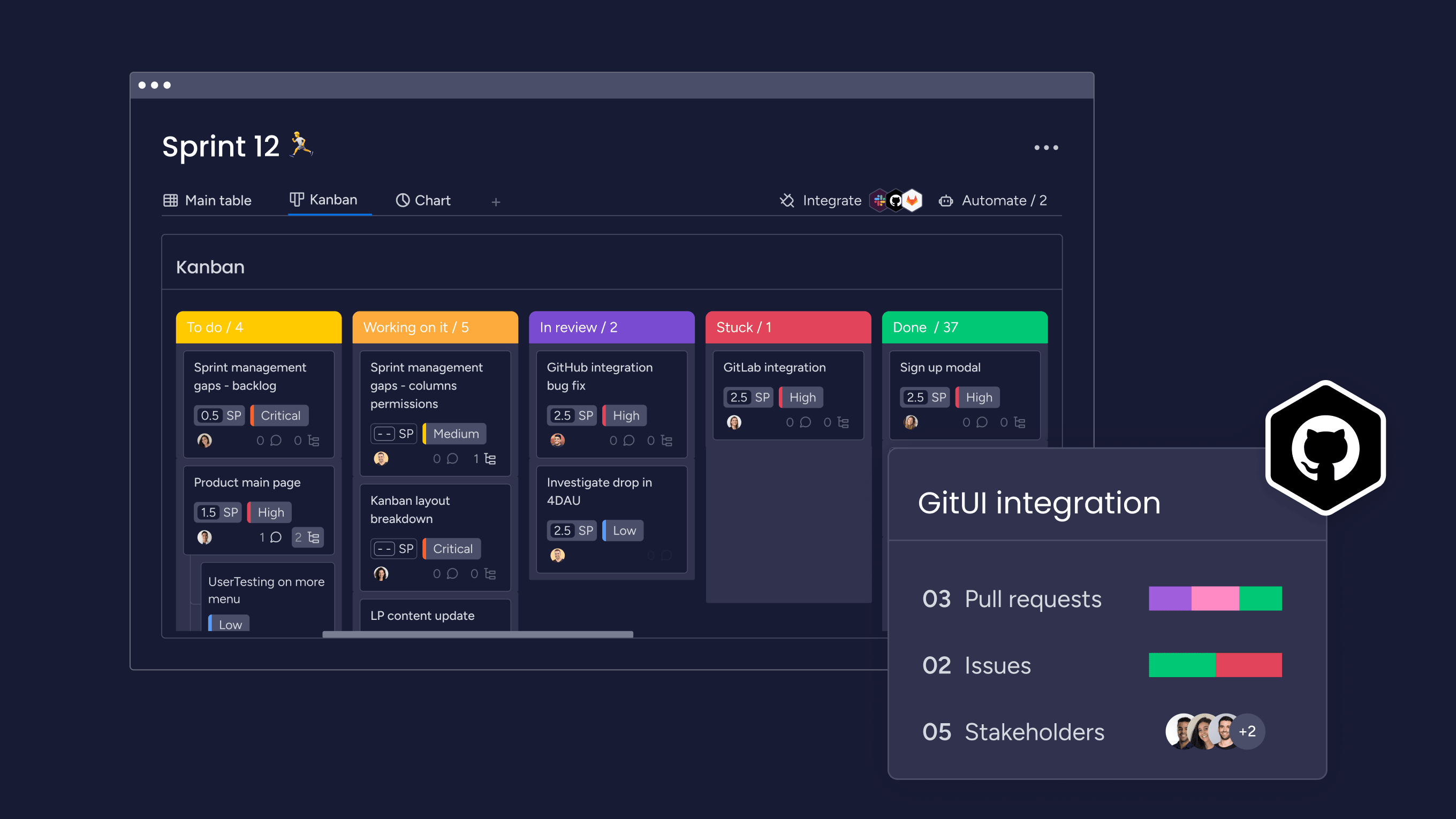
7 steps to build your product differentiation strategy
Effective product differentiation is rarely accidental. It comes from a structured process that helps you identify the right opportunities, align teams around a shared vision, and deliver value that customers notice. A step-by-step approach keeps the work grounded, moving from research and analysis to execution and refinement in a way that feels practical and achievable.
Each stage builds on the one before it, creating a clear path from understanding your market and customer priorities to shaping a strategy that not only sets your product apart but also adapts as conditions change.
Step 1: Analyze your competitive environment
Start by mapping all your competitors — both direct and indirect. Look at their positioning, strengths, and weaknesses.
Document everything: features, pricing, target customers, and messaging. Pay special attention to gaps where customers complain or needs go unmet, and consider a proof of concept to validate your potential solutions.
Step 2: Identify customer value drivers
Research what customers actually value through multiple methods. Surveys tell you what they think they want. Behavior analysis shows what they actually do — a crucial aspect of product discovery.
Segment customers by their value drivers. Different groups prioritize different benefits, and understanding these segments reveals your best opportunities. Building a minimum viable product can validate those priorities in real-world conditions.
Step 3: Map differentiation opportunities
Connect competitive gaps with customer value drivers. This intersection shows your most promising differentiation opportunities.
Evaluate each opportunity carefully. Consider customer impact, competitive advantage potential, and your ability to deliver successfully. A product prioritization framework can help you systematically rank these opportunities.
Step 4: Design your unique value proposition
Create a clear value proposition that communicates your differentiation. Focus on benefits customers care about, not just features.
Test your messaging with target customers. Refine it based on feedback until it consistently generates positive responses and purchase intent.
Step 5: Align cross-functional teams
Differentiation requires coordination across all functions, and with research showing that 82% of employees use work management software, having a central platform is no longer optional. Product roadmap planning ensures that product, marketing, sales, and service teams understand and deliver on your differentiation promise.
With alignment in place, monday dev helps teams stay aligned through shared visibility into priorities and progress. A well-structured product requirement document also ensures every function understands the detailed scope. When everyone sees how their work supports differentiation goals, they make decisions that reinforce your strategy.
Step 6: Implement differentiation tactics
Execute your strategy across all customer touchpoints. From product development to customer support, every interaction should reinforce your differentiation.
Monitor implementation closely. Inconsistent execution undermines even the strongest differentiation strategies, so address gaps quickly.
Step 7: Measure and optimize results
Track differentiation effectiveness through multiple metrics, each of which will provide valuable insights:
- Customer perception surveys.
- Win rates.
- Retention rates.
Use this data to refine your approach continuously. Markets change, competitors respond, and customer needs evolve — ongoing product lifecycle management ensures your differentiation adapts effectively.
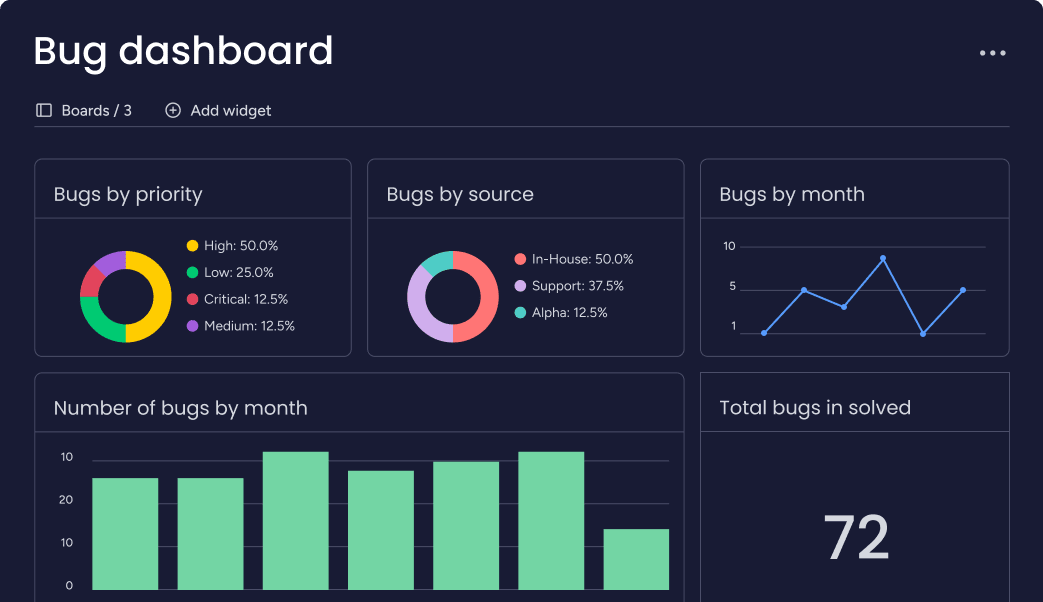
5 critical success factors for differentiation
Great ideas alone don’t guarantee differentiation. What sets successful companies apart is their ability to consistently deliver on their promises and adapt as markets evolve. A strong strategy needs the right foundations in place; without them, even the best product vision can fall short.
These five success factors determine whether your differentiation efforts create lasting advantage or fade under competitive pressure. Mastering them ensures that what makes your product unique is not only clear to customers but also sustained over time.
1. Customer-centric innovation
Start with deep customer understanding, as companies that adopt a customer-centric model can see revenue gains of 5 to 10 percent and significant cost reductions. This means going beyond surveys to observe how customers actually work and identify unspoken needs.
2. Operational excellence
Your operations must consistently deliver on differentiation promises. Quality, reliability, and consistency build the trust that makes differentiation credible.
This includes having the right processes, systems, and skills. Build quality controls that prevent execution failures from undermining your differentiation.
3. Brand consistency
Every customer touchpoint must reinforce your differentiation message. Mixed signals confuse customers and weaken your impact.
Create clear guidelines and train teams regularly. When everyone can articulate your differentiation clearly, it becomes more credible to customers.
4. Technology integration
Modern product differentiation often relies on robust technology to turn ideas into consistent delivery. The right platforms not only accelerate innovation but also reduce the complexity that comes with scaling unique offerings.
With monday dev, teams can design custom workflows that reflect their differentiation strategy rather than forcing processes into rigid systems. This flexibility makes it easier to iterate quickly, coordinate across functions, and ensure technology actively supports the distinct value you bring to market.
5. Continuous adaptation
Differentiation isn’t a one-time achievement. Markets evolve constantly, requiring ongoing innovation to maintain advantage.
Build capabilities for continuous differentiation. Regular research, competitive monitoring, and innovation processes help you stay ahead.
Try monday devWho drives product differentiation success?
Successful product differentiation doesn’t rest on a single team. It’s the result of coordinated effort across the organization, with each function playing a distinct role in shaping, delivering, and communicating value. From defining customer needs to building solutions and ensuring the market understands their impact, every group has a part to play.
By understanding these roles and how they connect, companies can structure teams and processes in a way that turns differentiation from a strategy on paper into a sustained competitive advantage.
Product management leadership
Product managers connect customer insights with technical capabilities, ensuring that differentiation efforts align with both market needs and business goals. Their role covers:
- Identifying opportunities: Spotting gaps in the market and translating them into product requirements.
- Balancing priorities: Weighing competitive dynamics, customer behavior, and technical constraints.
- Driving outcomes: Keeping focus on business impact while guiding day-to-day execution.
Effective product management requires both strategic vision and tactical discipline to ensure differentiation translates into measurable results.
Engineering and development excellence
Development teams turn differentiation strategies into working products. Their technical choices shape what’s possible and determine how quickly new value reaches customers.
- Enabling innovation: Technical architecture and tools can accelerate or limit differentiation.
- Adapting workflows: Teams need flexibility to support unique value propositions rather than forcing rigid processes.
- Executing consistently: Platforms like monday dev help developers align workflows with differentiation goals, making delivery faster and more reliable.
Marketing and sales execution
Marketing and sales are responsible for turning differentiation into a message that customers can clearly understand and connect with. Their job is to translate technical capabilities into tangible business benefits that highlight why the product stands apart. Credibility depends on consistency — when marketing promises align with the value sales delivers, customers build trust in the brand. Achieving this requires a strong grasp of customer needs combined with the ability to craft compelling, resonant messaging.
Executive strategic alignment
Executives play a central role in guiding differentiation by setting strategy, allocating resources, and defining a strong product vision that unites the organization. Their commitment shows not only in high-level planning but also in everyday decisions that reinforce differentiation priorities. When leaders consistently model this commitment, teams are more likely to stay aligned and focused on delivering unique value to the market.
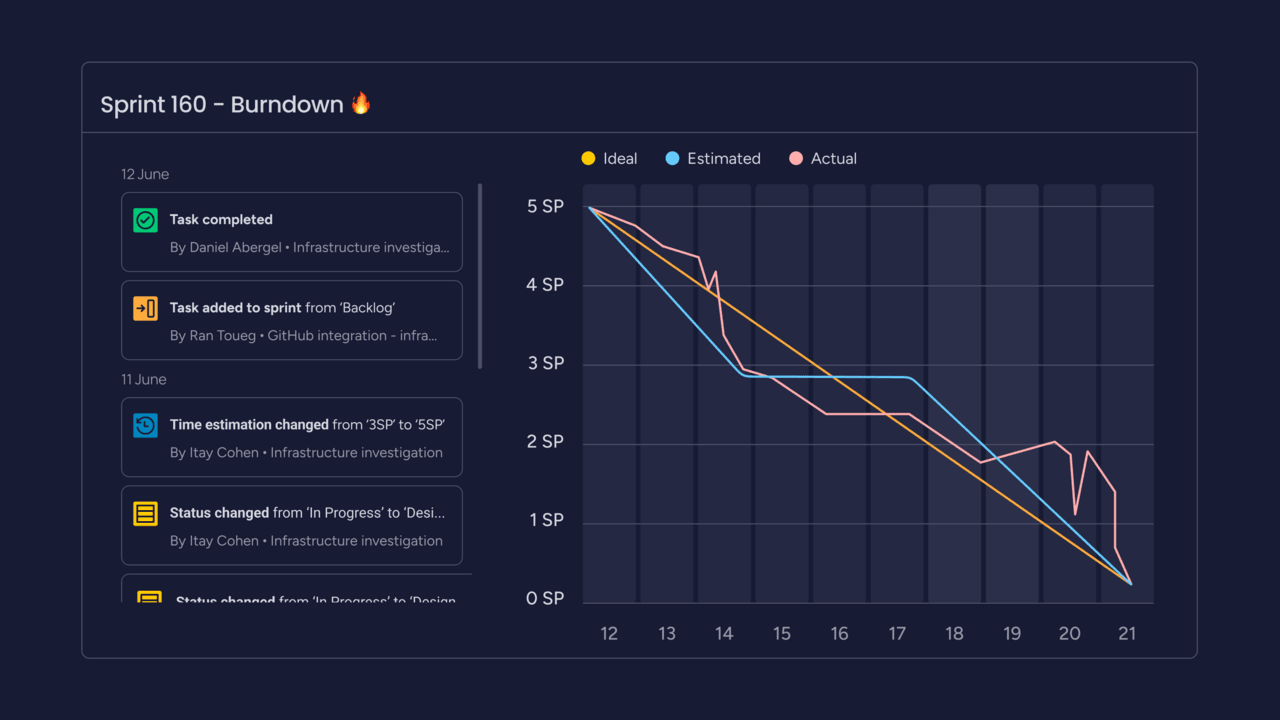
Measuring your differentiation impact
Tracking differentiation success requires metrics that capture both perception and outcomes. The right measurements can really help you to understand what works and guide future investments.
It’s also essential to combine quantitative metrics with qualitative insights for a complete picture.
Market share and revenue metrics
Financial indicators show differentiation impact clearly. Track market share growth, revenue per customer, and pricing premiums versus competitors.
Monitor trends over time. Look for correlations between differentiation initiatives and financial improvements.
Customer satisfaction indicators
Customer metrics reveal how well differentiation resonates. Net Promoter Score, satisfaction ratings, and retention rates show perception and loyalty impacts.
Regular surveys and interviews provide deeper insights. Understand which aspects of your differentiation drive satisfaction most.
Competitive positioning analysis
Track your position through win/loss analysis and customer feedback. Understand why customers choose you over alternatives.
Watch competitor responses to your differentiation. Assess how well you’re maintaining advantage as markets evolve.
How monday dev accelerates product differentiation
Turning a differentiation strategy into real results depends on how well teams coordinate and execute. Many organizations struggle with this step, as unique ideas can get slowed by rigid processes or lost across departments. The right platform creates alignment, speeds up delivery, and ensures strategy translates into action.
monday dev provides that foundation through customizable boards, automations, and integrations with more than 200 tools in your stack. AI-powered features like monday AI add another layer, helping teams summarize discussions, generate content, and surface insights that point directly to the most promising opportunities.
Custom workflows that match your unique processes
Every differentiation strategy requires unique ways of working. monday dev lets teams create workflows that support their specific approach with custom development environments, reusable templates, and low-code building blocks that accelerate implementation.
This flexibility is crucial because rigid processes constrain differentiation. Teams can adapt quickly as they learn what works, building sustainable advantages through better execution with features like drag-and-drop workflow builders and customizable development pipelines.
Real-time collaboration across teams
Differentiation requires seamless coordination between functions. monday dev provides shared visibility into priorities, progress, and dependencies through centralized workspaces, real-time commenting, and @mentions that keep everyone in sync.
Real-time updates also help teams respond quickly to market changes. Using product roadmap software with timeline views, gantt charts, and kanban boards ensures everyone sees the same information and makes decisions that reinforce differentiation goals.
AI-powered insights for strategic decisions
AI capabilities like monday AI analyze project data to identify patterns and predict issues. These insights help teams focus on high-impact differentiation opportunities through automated reporting, risk identification, and resource optimization — a crucial advantage given that 77% of marketing professionals use AI for data analysis and strategic planning.
Teams can see which features drive customer value most through customizable dashboards, visual analytics, and performance tracking widgets. This data-driven approach ensures differentiation efforts target the right areas while minimizing technical debt and development bottlenecks.
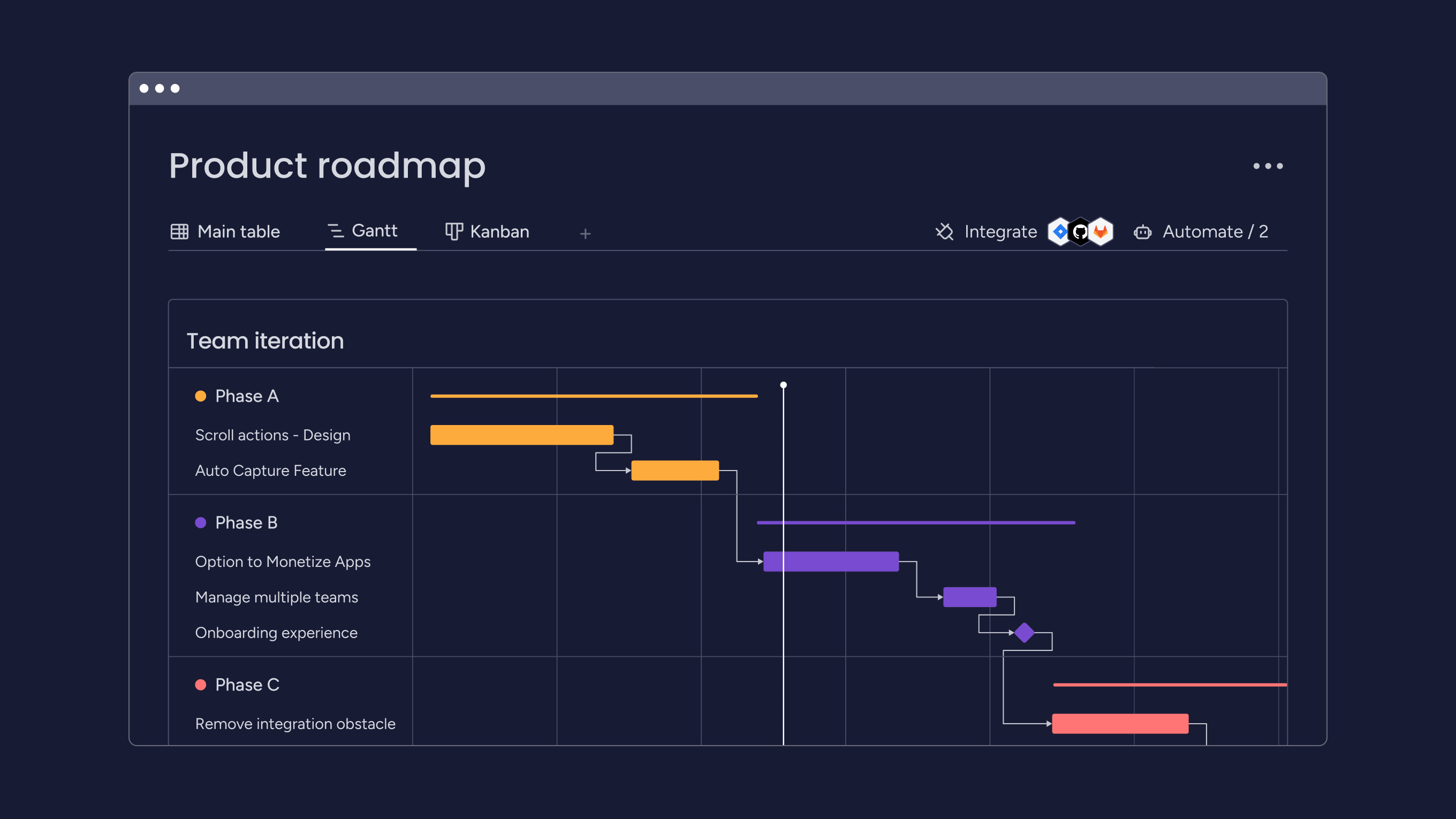
Transform your differentiation strategy into market leadership
Product differentiation succeeds when strategy and execution work hand in hand. It starts with a deep understanding of customer needs and clear awareness of where competitors fall short. From there, lasting advantage comes from building the capabilities to deliver unique value consistently.
The companies that lead their markets are the ones that pair sharp insights with disciplined execution. By adapting quickly to change while maintaining a high standard of quality, they create differentiation that not only resonates with customers but also stands the test of time.
Try monday devFrequently asked questions
What is an example of successful product differentiation?
An example of successful product differentiation is Apple's focus on design and user experience, which allows premium pricing despite similar technical specifications to competitors. Another is Tesla, which differentiates through electric technology and over-the-air software updates, creating a unique position in the automotive market (which allows premium pricing despite similar technical specifications to competitors). Tesla also differentiates through electric technology and over-the-air software updates, creating a unique position that traditional manufacturers struggle to match.
How long does implementing a product differentiation strategy take?
Implementing a product differentiation strategy typically takes six months to a year for initial results, though building sustainable differentiation requires ongoing refinement. The timeline depends on how complex your changes are and how quickly teams can coordinate across functions to deliver new value.
What is the difference between product differentiation and innovation?
Product differentiation focuses on making your offering distinct from competitors in ways customers value, while innovation creates entirely new solutions that may or may not differentiate you. Innovation can enable differentiation, but not all innovations create meaningful competitive advantages in your market.
Can B2B companies use product differentiation strategies effectively?
B2B companies can use product differentiation very effectively by focusing on service quality, technical capabilities, or industry expertise rather than consumer features. B2B differentiation often emphasizes operational benefits, compliance capabilities, or specialized knowledge that addresses specific industry challenges.
How do you maintain product differentiation when competitors copy your features?
Maintaining differentiation when competitors copy features requires continuous innovation and building advantages that are harder to replicate. Focus on creating integrated experiences, developing proprietary capabilities, and building strong customer relationships that create switching costs beyond individual features.
What role does customer feedback play in product differentiation strategies?
Customer feedback reveals which features truly matter to buyers and identifies gaps between your offering and customer needs that create differentiation opportunities. Regular feedback collection helps teams understand how customers perceive value and guides decisions about where to focus differentiation efforts for maximum impact.
 Get started
Get started 


